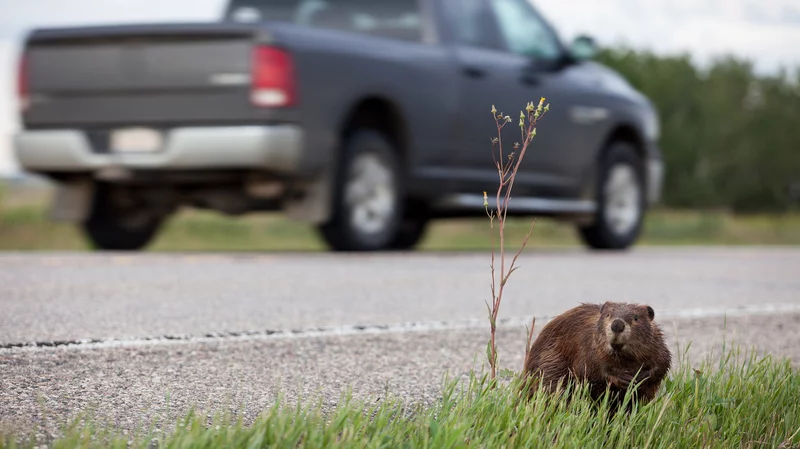In a fascinating conversation with environmental journalist Ben Goldfarb, we explore how roads and cars are transforming the lives of animals globally. Goldfarb sheds light on the challenges faced by wildlife, showcasing the unexpected consequences of their encounters with a modern-day “predator” — the automobile.
The interview starts by unveiling the “barrier effect” of roads, where the constant stream of traffic creates an invisible wall that animals avoid attempting to cross. Beyond the visible roadkill, Goldfarb emphasizes the silent suffering of animals that choose not to navigate this perilous path.
Road salt becomes a surprising villain, with an astounding 20 million tons used annually in the U.S., altering the chemistry of vegetation along roadsides. Goldfarb highlights the unintended consequences of this practice, extending far beyond our immediate awareness.
The “lawn effect” poses a paradox, where roadside vegetation meant to mimic habitat becomes a trap, luring animals into dangerous situations. Goldfarb navigates the fine line between creating helpful habitats and inadvertently putting wildlife at risk.
The interview touches on the impact of reduced traffic noise during the 2020 COVID lockdown on songbirds. Goldfarb shares a study showcasing how white-crowned sparrows adapted by transforming their songs into intricate melodies when freed from constant competition with traffic noise.
Despite the challenges, Goldfarb emphasizes the adaptability of wildlife to urban environments. The tale of Chicago’s coyotes, exhibiting road-crossing etiquette, serves as a testament to nature’s ingenious coping mechanisms.
The conversation shifts towards innovative solutions, exploring wildlife overpasses as a means to address road-related challenges. Goldfarb introduces the concept of adaptive crossings that can be disassembled and relocated, aligning with the changing habitats of species affected by climate change.
In the face of evolving ecological dynamics, Goldfarb stresses the need for flexible solutions and a comprehensive understanding of the relationships between roads, wildlife, and the environment. The conversation serves as a compelling call to action, urging a shift in road ecology and an appreciation for the adaptive prowess of the creatures navigating our ever-changing landscape.
